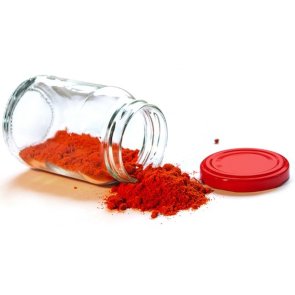5 Types of Cosmetic Clay and Their Skin Benefits
 Various types of cosmetic clay are widely used in skincare because of their absorbent, anti-inflammatory, whitening, balancing and detoxifying properties. Different cosmetic clays have different skin benefits because each of them has a unique mineral composition. Let’s learn more about the most popular types of clay used for face packs.
Various types of cosmetic clay are widely used in skincare because of their absorbent, anti-inflammatory, whitening, balancing and detoxifying properties. Different cosmetic clays have different skin benefits because each of them has a unique mineral composition. Let’s learn more about the most popular types of clay used for face packs.Bentonite Clay
Bentonite is one of the most common types of clay. It is composed of silicate-rich volcanic ash sediments. This type of clay is known for its absorbing capabilities; when mixed with water, bentonite clay swells and becomes a highly porous substance that acts like a sponge. Wet clay easily absorbs excess oil from the skin surface as well as acts like a magnet for impurities and toxins. Because of these properties, bentonite is used in face packs for oily, combination and problem skin. It helps to get rid of toxins and impurities, makes the skin considerably smoother, tightens pores, and prevents acne breakouts.
Kaolin Clay
Although kaolin, or china clay, is often referred to as white clay, it has several varieties that differ in color because of their slightly different mineral content. White, yellow, pink, and red are among the most popular ones. White kaolin clay is considered the gentlest type of cosmetic clay. It is used for mild exfoliation of dry and sensitive skin. Other types of kaolin clay have stronger absorbent and exfoliating properties but still remain gentle enough for sensitive skin. They are often used in brightening masks that are designed to remove unwanted pigmentation, such as age spots or acne scars, brighten complexion and even out the skin tone.
Fuller’s Earth
In Ayurveda, this type of clay is known as multani mitti (“mud from Multan”, a city in Pakistan where it was first mined). It is particularly valued for its absorbing and whitening properties. They make fuller’s earth effective at removing oils, dirt, and impurities from human skin, so this type of clay has extensive uses in cosmetology and dermatology. Facial masks with fuller’s earth are used to balance oily and combination skin, boost circulation in the epidermis, reduce pigmentation, and draw out toxins, heavy metals and bacteria. It should be noted that fuller’s earth is quite strong, so it works best on oily skin.
Rhassoul Clay
Rhassoul (also spelled ghassoul) is a unique clay that is mined from the Atlas Mountains in Morocco. It is extremely rich in minerals, including iron, lithium, magnesium, potassium, silica, sodium, and trace elements. It has been used in traditional Moroccan hammams (baths) since at least the 8th century. Rhassoul can be used as a facial mask, body exfoliant (along with a special glove named kessa), and even as a shampoo and anti-dandruff treatment. Like kaolin clay, it is perfect for dry and sensitive skin. Facial packs with rhassoul clay are less thick than other clay masks, they have a mousse-like texture that many people like.
French Green Clay
Mined in the Mediterranean region of France, this type of clay is also known as sea clay or illite clay (although some sources distinguish between French clay and sea clay). It owes its color to iron oxides and decomposed plant material. The color actually indicates the quality of the product—French clay should be bright green, but never dirty green or gray. Like other clays, French green clay has excellent absorbent properties. In addition, it boosts circulation in the epidermis and helps get rid of occasional blemishes. Facial masks with this clay are similar to rhassoul clay in consistency, but they have a slightly grainy texture.
Breadcrumbs
Filters
- Face
Tags
Related Articles
- 7 Skin Benefits of Cambrian Blue Clay, What Is Ubtan and How to Use It to Get Glowing Skin?, 3 DIY Matcha Green Tea Face Masks for All Skin Types, 4 Natural Beauty Recipes Inspired by Cleopatra